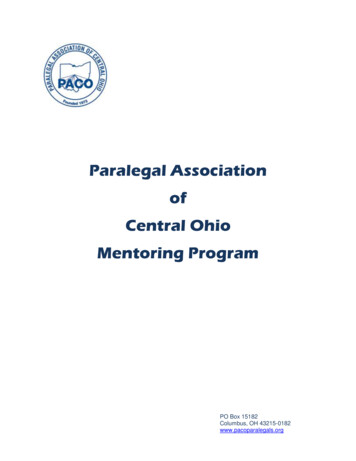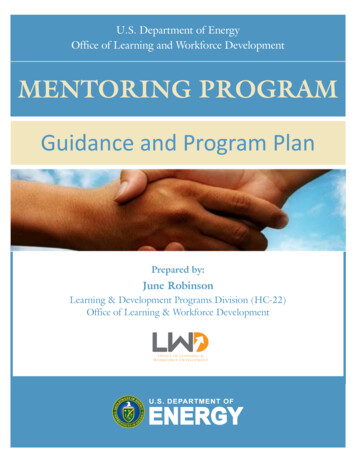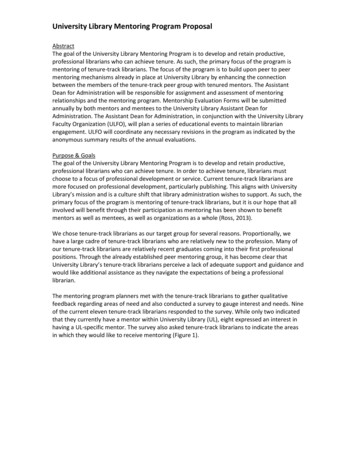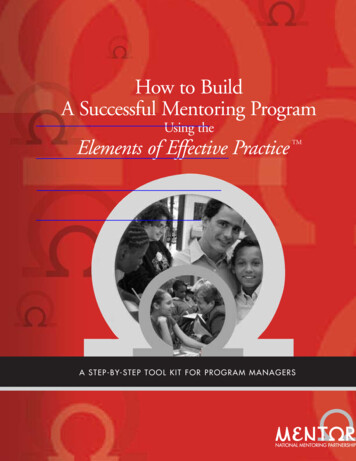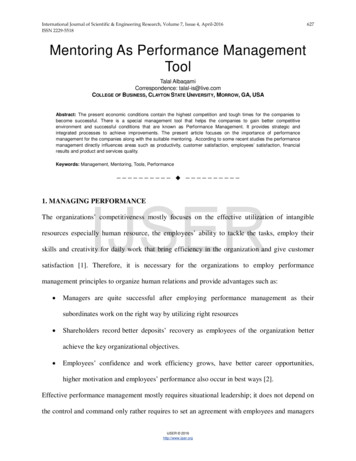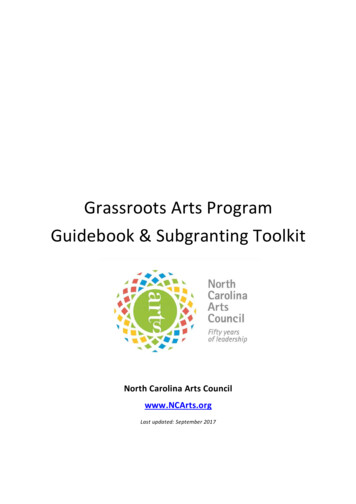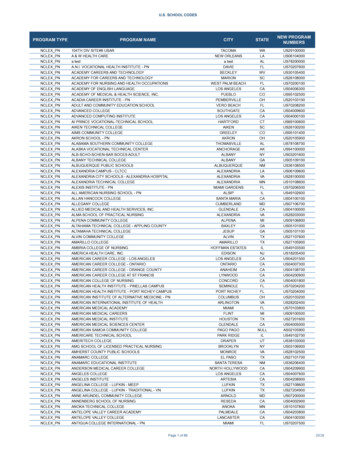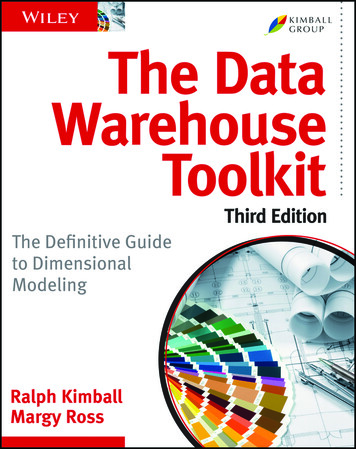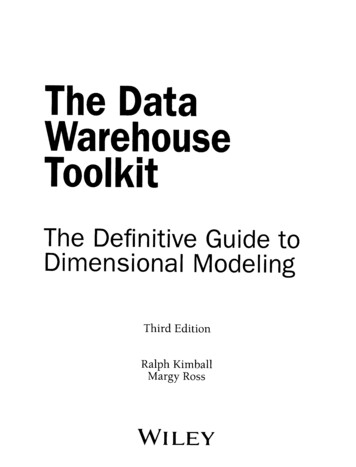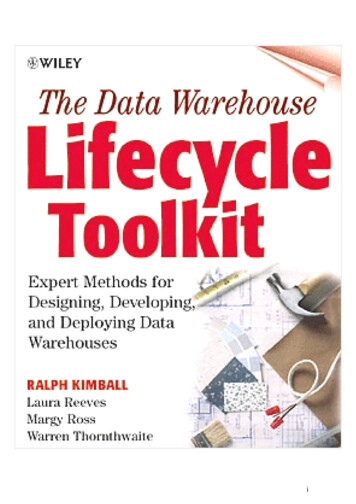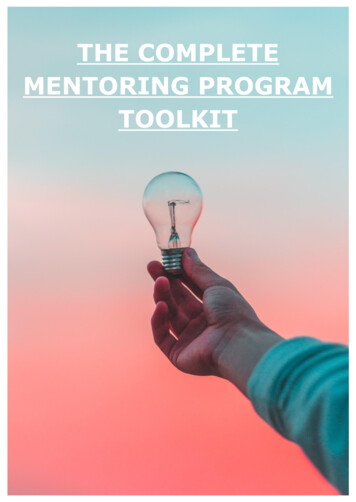
Transcription
THE COMPLETEMENTORING PROGRAMTOOLKIT
MENTORINGMentoring has been transforming people for thousands of years.And today, it is an equally transformational tool for organisations allover the world - including the 71% of Fortune 500 companies whorun formal mentoring programs.Why mentoring?Organisations that run effective mentoring programs see higherengagement, more positive and inclusive workplace cultures, andbetter leadership development.Individuals who have access to great mentors (and great mentees),see more promotions, more skill development, increasedconfidence, and better personal and professional outcomes.The following sections of this toolkit are intended to provide youwith many of the tools you will need to start and run a mentoringprogram for your organisation.Many of the tools that you can use to empower your people andorganisation to improve through the proven benefits of mentoring.2
TOOLKIT CONTENTS5-6Mentoring Program Checklist8-10Mentoring Program Tip-sheet12-15 Mentor-mentee Matching Questionnaire17-20 Proven Mentoring Content & Resources22-24 Mentoring Program Proposal Framework3
“Steve, thank you for being a mentorand a friend. Thanks for showing thatwhat you build can change the world.I will miss you.Mark Zuckerberg, Facebook CEO, tweetsabout his mentor Steve Jobs, the formerApple CEO.4
MentoringProgramChecklist5
MENTORING PROGRAM CHECKLISTAre you on the right path?[ ] MENTORING SOFTWARE DEMOWill you have 50 program participants in your program? Get a mentoringsoftware demo to see how it reduces the admin work and hassle required tomanage your program.[ ] DEFINE OBJECTIVESDefine the purpose of your program (learning & development, diversity &inclusion etc.) and create associated measurable objectives.[ ] CREATE MATCHING CRITERIAWhat matching criteria do you want to gather from your mentors and menteesto make matches? What survey questions should you ask? Years of experience?Interests? Career goals?[ ] COLLATE RESOURCES & CONTENTHow can you maximise the mentoring experience for mentors and mentees?Take a look at our Resource Hub here [ ] CREATE TRACKING MECHANISMSHow will you gauge mentee-mentor progress and satisfaction? How will youmeasure and demonstrate program success?[ ] DECIDE ON METHOD OF DISSEMINATIONHow will you communicate with mentors and mentees? How will you sendhelpful content to them? Email? Intranet? Or via Mentorloop?[ ] GENERATE AWARENESSGet your marketing hat on, or pull in some reinforcements. Get people excited.6
MENTORLOOPMENTORING SOFTWARE“This software has enabled us to successfullyimplement a mentor program, something that we (asan organisation) have wanted to do for many years.The Mentorloop software has taken all of the hardwork out of administering a successful program.”Catherine Atkinson GM @ The Institute of PublicAccountantsSee a software demo7
MentoringProgramTip-Sheet8
TOP 10 TIPS:How to Run a Successful Mentoring Program1. ENSURE SENIOR MANAGEMENT BUY-INAsk a senior member of staff and/or divisional heads topromote the program in company-wide emails orannouncements.2. FOCUS ON WHAT SUCCESS LOOKS LIKEDefine program objectives before the start of the program.Integrate goal-setting into the Mentorloop recruitment form(or your other recruitment method) so you can measureagainst initial goals and gauge the success of the program.3. SET EXPECTATIONS EARLYInspire mentees to be proactive; they have the most to gain fromthe experience. Get employees in the habit of using Mentorloop,so that you can accurately track activity and engagement.4. GET PEOPLE EXCITED!Bring awareness to the program launch date of with an event.Even a small event ensures mentorship is top-of-mind foremployees and management, resulting in better engagementand better outcomes.5. ACTIVELY ENGAGE PARTICIPANTSSet tasks in so mentees remember to introduce themselves andschedule their first meetings. Share checklists to coach themthrough the process - and show them what good mentoringlooks like.9
6. LEVERAGE RESOURCES & CONTENTUtilise resources - including checklists and learning resources tokeep mentors and mentees engaged and help them achieve theholistic development outcomes they desire.7. MONITOR & MANAGEUse Mentorloop to identify participants who have not yetcommunicated or are lacking engagement, and find out why.Leverage pulse surveys and program reports to receivegoal-setting and satisfaction updates.8. DON’T FORCE ITLife happens. If the situation of a mentor or mentee changes(available time, personal issues etc.), feel free to remove themfrom the program and re-match the other user.9. DRIP FEED ENGAGEMENTAfter the first month, send a check-in email and ‘thanks forpartaking’ note. If using Mentorloop, enable automated contentsequences, which automatically send contextual content andresources to your people.10. USE US! WE’RE HERE TO HELPWe are here to be your mentoring software provider andmentoring consultants. Feel free to reach out to us aboutanything mentoring related, including how-to’s, must-do’s, anddon’t do’s.10
“Had there not been you, there neverwould have been me.Oprah Winfrey told her mentor, BarbaraWalters, during an interview.11
Mentor-MenteeMatching Questionnaire12
10 OBJECTIVE QUESTIONSYou must ask.Q1. WHAT’S YOUR NAME?An obvious question, for obvious reasons.Q2. WHERE ARE YOU LOCATED?If in-person meetings are important to your mentoring program, it helps to know wherepeople are located. You may also want to flip this and connect people into remotementorships to connect your workforce etc.Q3. WHAT’S YOUR LINKEDIN URL?In the 21st century, you can save your mentor or mentee a lot of mentorship discovery time bygiving them access to their mentor or mentees professional digital footprint: LinkedIn.Q4. WOULD YOU LIKE TO BE A MENTOR, MENTEE, OR BOTH?It’s pretty hard to match mentors with mentees without knowing whether they are a mentor ormentee. But it's also important to ask mid-level managers whether they would also like to bementored - even though they are obviously suited to being a mentor too. If not, theexperience is still a learning one, with all mentors being inherently involved in reversementoring anyway.Q5. WHAT’S YOUR CURRENT JOB FUNCTION?e.g. sales, marketing, strategy, management, operations, Talent/HR, IT, engineering. Manymentees want to be connected with a mentor who aligns with their own career path oraspirations. Find out who aligns with who.13
10 OBJECTIVE QUESTIONSYou must ask (continued)Q6. WHAT ARE YOUR GREATEST STRENGTHS?e.g communication, leadership, design etc. Maybe you want to connect like-strength people;maybe you want to connect people weak in certain areas with people strong in those areas.Q7. WHAT AREAS WOULD YOU LIKE TO DEVELOP IN?A follow-on to the question above, maybe a mentee is currently working in sales but wouldlike to transition into more marketing focused roles. The goal/desires of the mentees is moreimportant than their current state (mentoring is outcome focused - forward looking).Q8. WHAT’S THE #1 THING YOU WANT TO GET OUT OF THISMENTORSHIP?e.g. general career advice & guidance, industry-specific expertise, management/leadershipdevelopment, expanding my network etc. This is also a question to measure against at theend of the program, to showcase employee outcomes.Q9. WHAT’S YOUR PREFERRED CHANNEL OF COMMUNICATION?i.e Mentorloop, email, skype, phone etc. While this question isn’t a make or break, it can behighly beneficial to have a mentor and mentee match where both want to communicate viaskype, or phone, or email etc.Q10. IF YOU HAD TO DESCRIBE YOURSELF (SELECT ALLWHICH APPLY)e.g. sports nut, techie, social butterfly, dog lover, foodie, health nut, traveller etc. There’snothing better than a bit of common ground. Try find some great icebreakers andcommonalities between mentors and mentees with questions on the lighter side.14
5 SUBJECTIVE QUESTIONSYou should ask Q11. IN 3 YEARS TIME, YOU WOULD LIKE TO BE DOING [X] in[Y]?Human’s find it challenging making realistic plans long term; but you can glean a lot of insightfrom asking someone where they want to be in a few years time. How ambitious are they? Doyou have a mentor in your cohort who knows the exact path to that position because they arealready there - or have been there before.Q12. YOUR TOP PASSIONS ARE.You can leave this one open ended or make it multiple choice to encourage mentors andmentees to be matched on a deeper level. Mentorships aren’t only about professionaldevelopment.Q13. WHAT ARE SOME CHALLENGES YOU ARE EXPERIENCINGAND TRYING TO OVERCOME IN YOUR ROLE AT THE MOMENT?Is the mentee having a hard time with their boss? Or struggling to transition to leadership? Ifyou can align these problems and hurdles with a mentor who is in the best position to helpthem overcome them - you are onto a winner.Q14. DESCRIBE YOUR IDEAL MENTOR OR MENTEE.This question really gets to the heart of the type of person and attitude each mentor ormentee would like to be paired with. While you probably can’t give them their ideal mentor ormentee - asking this question can help you get close.Q15. WHAT DOES MENTORSHIP MEAN TO YOU?What’s their philosophy on mentorship? Do they see it as a very active endeavour? What dothey hope to get out of it? Asking this questions can help you align expectations - which is halfthe battle in creating conducive and productive mentor-mentee interactions.15
MENTORLOOPMENTORING SOFTWARE“Mentorloop provides exceptional value formoney, the tools to facilitate one-to-onementoring while capturing data to quantify thevalue of the program and feedback on bestpractice.” Ronnie Wood Director @ IMNISGet a mentoring software demo16
ProvenMentoringContent &Resources17
CHECKLISTSMentee first meeting checklistMentees can struggle to understand and articulate what they want from their mentor andmentorship. This checklist helps them gather these ideas and get off to a great start.See checklistFirst meeting checklist for mentorsPeople aren’t born great mentors. And many are doing it for the first time. This checklisthelps them to understand their role in the mentorship - and helps them look like aseasoned pro.See checklist18
HOW TO’SHow to be a great menteeTo get the most out of any mentorship, a mentee shouldunderstand and adhere to the following principles.See one-sheetHow to be a great mentorBeing a great mentor isn’t always as easy as it looks – but youcan make it easier with these easy-to-follow guidelines.See one-sheet19
GOAL-SETTINGThe power of goal-settingPeople who set goals are more successful than those who don’t. Mentorshipsthat employ goal-setting as part of the process are also more effective thanthose which don’t. This one-sheet explains the power of goal-setting.See one-sheetGoal-setting frameworkSetting goals is a process, and there are right and wrong ways to do it.Ensure your goals are set correctly with the trusty Mentorloop framework.See framework20
MentoringProgramProposalFramework21
STARTING YOUR OWNMENTORING PROGRAM?This far into the toolkit, we hope that you are ready (almostready) to start implementing your own transformationalmentoring program.Most people understand the benefits of mentoring, for bothorganisations and individuals. But that doesn’t mean you don’thave to prove the business case for mentoring to yourcolleagues and/or executive team So the following two pages layout a mentoring programproposal structure which helps all stakeholders understandhow and why your mentoring program will be run.22
[SLIDE 1] WHY MENTORING?Mentoring is a proven business strategy, with 71% of Fortune 500 companies running formalisedmentoring programs. While the benefits of mentoring are understood, the scale and consistency ofmentoring outcomes is often understated. Countless studies have proven the effectiveness ofmentoring:- 75% of millennials deem mentoring critical to their success- Managerial productivity increased by 88% when mentoring was involved, versus only 24% with trainingalone.- Retention rates have been much higher for mentees and mentors (72% and 69%) than for employeesnot involved in mentoring programs (49%).- More than 60% of college and graduate students listed mentoring as a criterion for selecting anemployer after graduation.- Employees who received mentoring were promoted 5 times more often.[SLIDE 2] PROGRAM GOALS & OBJECTIVESWhat are your mentoring goals?Diversity? Learning and development? Succession planning?State them in this section - and create measurable goals and objectives for these goals.E.g Promote 50% more managers from internally over the next 2 years - which can be tiedback to the goal of succession planning.[SLIDE 3] PROGRAM ROLES & RESPONSIBILITIESWho will be managing/administering the mentoring program?What are the expectations of mentors and mentees?23
[SLIDE 4] SELECTION CRITERIA & MATCHINGHow many people will be in your mentoring program?What criteria are you going to use in inviting people into the program?How will these participants be matched? And what criteria will they be matched on?[SLIDE 5] PROGRAM IMPLEMENTATIONHow long will the program take to implement?What are the stages of implementation?Will you need any help or support at any particular stage?[SLIDE 6] PROGRAM EVALUATIONHow will success be measured?How are you going to prove organisational and individual outcomes?24
“It’s always good to have a helping handat the start. I wouldn’t have gotanywhere in the airline industry withoutthe mentorship of Sir Freddie Laker.Virgin Founder, CEO, and billionaire Richard Branson25
Mentorloop is a mentoring softwareplatform which enables organisations to runmore efficient and effective mentoringprograms.Interested in seeing how we can help you?Visit our website or contact us now.Visit websiteEmail us26
2 Mentoring has been transforming people for thousands of years. And today, it is an equally transformational tool for organisations all over the world - including
